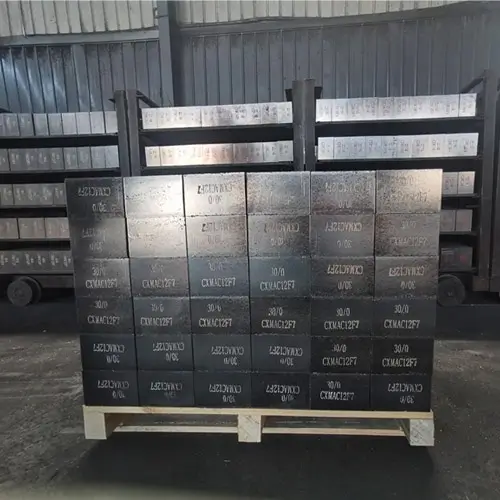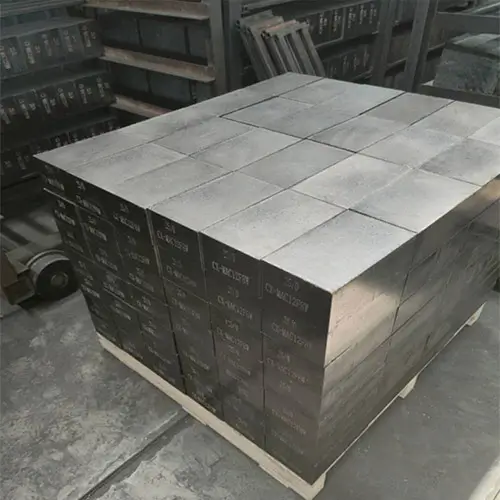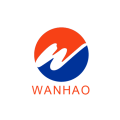Liaoning’s magnesite resources are an important advantageous mineral in my country. Relying on its resource advantages, Liaoning has developed into my country’s most important magnesite industry base and the world’s most important magnesia refractory production base. Since the beginning of this year, Liaoning Province has implemented the “Implementation Opinions on Promoting the High-Quality Development of the Magnesite Industry”, strengthened resource management and control, eliminated backward production capacity, and accelerated the solution of problems such as low resource utilization, overcapacity, unreasonable industrial structure, insufficient innovation capabilities, and environmental pollution. The quality and efficiency of the entire industrial chain will drive the high-quality development of the industry, and strive to move towards the goal of high-quality development with resource intensiveness, industrial agglomeration, regional coordination, environmental friendliness, safety and stability.
Status of Liaoning magnesia refractory industry
In 2024, the total number of enterprises above designated size in Liaoning’s magnesite industry will be 500, and the output value is expected to reach 50 billion yuan, a year-on-year increase of 3%. The output of magnesia refractory materials will reach 16.82 million tons, accounting for more than 95% of the total economic output of the magnesite industry.
Magnesia refractory materials are still the leading industry in Liaoning’s magnesite industry. Affected by the domestic and foreign environment and weak demand in the downstream market, the demand for magnesia has continued to be sluggish since the beginning of this year, and the entire magnesite industry chain still has excess capacity. The magnesia market has a large inventory and slow consumption. Supported by factors such as strict control of magnesite mines, strict environmental protection inspections, and a short-term increase in electricity prices, the price of magnesia has increased in stages, but there has been no fundamental change in demand, and the price increase of magnesia is unsustainable. Overall, the demand for magnesia has continued to be sluggish this year, and both the transaction volume and price are not ideal.
The situation of oversupply of magnesia has not changed fundamentally. Although it is a characteristic and advantageous industry, it does not have enough “voice”. There are many problems in the magnesia market in Liaoning Province, such as overcapacity, vicious competition, imperfect industrial chain, and prominent environmental protection issues. According to some refractory companies, due to the pressure on industries such as steel and building materials, mergers and reorganizations are frequent, and the ordering conditions are more stringent in the face of magnesia demand. The development of the magnesia industry is facing unprecedented challenges. In addition, the inventory and backlog of the magnesia market are large, especially small and scattered enterprises and middlemen have no bottom line to cut prices and grab orders, which disrupts the market order, resulting in a large gap between the final transaction price and the quotation, ranging from 50 yuan to 150 yuan per ton.
Liaoning magnesia still occupies an important share in the domestic and foreign markets. Liaoning’s magnesia material exports include light-burned magnesia, sintered magnesia, fused magnesia, magnesia bricks and other products, with an average annual export volume of about 3 million tons. The products are mainly exported to more than 100 countries and regions such as the United States, Europe, Japan, India, and South Korea. Although the country has adjusted its magnesia export policy and cancelled export quotas and tariffs, Liaoning’s magnesia refractory exports still account for more than 60% of the international market share. At the same time, its magnesia industry also directly affects the supply chain and industrial chain of domestic magnesia refractory, magnesia building materials, and magnesia chemical materials industries, and its products cover 90% of the domestic market.

The impact of policies on the magnesia industry
Changes in the national magnesia export policy and environmental protection policy have become a turning point in the changes in the magnesia industry. In 2017, the imbalance between supply and demand of magnesia ore caused a sharp rise in magnesia prices, stimulating some funds to enter the magnesia industry, especially the production capacity of products such as fused magnesia. In response to the shortage of ore, a number of new flotation projects have been launched in various places, and the production capacity has been expanded again. The prices of magnesia and magnesia products have fallen to varying degrees. In 2023, in order to solve the long-standing problems of low resource utilization, overcapacity, unreasonable industrial structure, low industrial concentration, insufficient innovation ability, and environmental pollution in the magnesia industry, especially around the regulation of magnesia production, elimination of backward production capacity, and improvement of scientific and technological support capabilities, Liaoning Province issued the “Implementation Opinions on Promoting the High-quality Development of the Magnesia Industry” and the “Special Rectification Plan for the Magnesia Industry in Liaoning Province”.
The core of these two policies is to strengthen substantive integration, strictly control the establishment of new mining rights, strictly control the scale of mining, strengthen the integration of “mining, mineral processing, and processing”, and strengthen supervision and law enforcement.
First, carry out special rectification of magnesia to promote the withdrawal of backward magnesia production capacity. Across the province, special rectification will be carried out for magnesia enterprises that lack filing procedures, lack energy assessment procedures, lack environmental assessment approval and acceptance, and pollution permit procedures, fail to discharge pollutants according to the requirements of the pollution permit, lack land use procedures (excluding those within the mining area), have illegal acts such as unlicensed mining, cross-border mining, and destructive mining, lack of safety production permits and do not meet safety production conditions, and magnesia-related product production and sales enterprises whose product quality does not meet the standards. These measures are bound to lead to the withdrawal of a batch of backward magnesia production capacity.
Second, strengthen the control of magnesium resources and curb the further expansion of magnesia production capacity. At present, governments in various parts of Liaoning are actively implementing the deployment requirements of the provincial party committee and government on promoting the high-quality development of the magnesia industry, formulating work plans, and deploying special rectification work. For example, Anshan City requires that all mineral resources such as magnesia ore mined by mining enterprises, low-grade ore used for processing or flotation, and infrastructure stripping rock, etc., shall be included in the magnesia ore production control indicators according to regulations. It can be said that the efforts to strengthen resource management are unprecedented.
Third, the elimination of light-burning reverberatory kilns will help improve the technical equipment level of the magnesia industry. By the end of 2024, more than half of the light-burning reverberatory kiln production capacity within the elimination range in each municipal district should be eliminated and withdrawn. By the end of 2025, all light-burning reverberatory kilns will be eliminated. Light-burning powder in Liaoning Province is mainly supplied to mid-range, high-purity, and fused magnesia raw material enterprises, and is mainly used in desulfurization, slag-making agents, magnesium chemicals, and magnesium building materials industries outside the province. The complete elimination of light-burning reverberatory kilns has a greater impact on the production of some small batches and multiple varieties of products. In the long run, the implementation of this policy is beneficial to the elimination of backward production capacity and the improvement of the technical equipment level of the industry.
Fourth, promoting equipment renewal in the industrial field is conducive to energy conservation and carbon reduction in the magnesia industry. On April 9, the Ministry of Industry and Information Technology and seven other departments issued the “Implementation Plan for Promoting Equipment Renewal in the Industrial Field”, proposing to accelerate the green transformation of production equipment, promote the renewal of key energy-consuming equipment in the industrial field, and promote the application of energy-saving equipment with energy efficiency level 2 and above. Industrial equipment is the main carrier of energy consumption in the magnesia industry and the focus of promoting energy conservation and carbon reduction. This time, promoting energy-saving equipment in key industrial areas will also help promote the upgrading and transformation of equipment in the magnesia industry, increase effective investment, and help reduce energy consumption and carbon emissions of equipment such as boilers, motors, and transformers. It will become an important force to promote the high-quality and green and low-carbon development of the magnesia industry.
Fifth, promoting the transformation and upgrading of the magnesia industry will help digest the excess capacity of magnesia. The overcapacity of Liaoning’s magnesia industry mainly refers to the overcapacity of magnesia refractory materials. The government actively guides enterprises to transform and develop the magnesium chemical and magnesium building materials industries, but enterprises are not willing to actively transform. There are companies that want to transform, but they are struggling to choose the right projects. In fact, the refractory industry has always been a major advantageous industry in Liaoning. Its development direction should be upgraded in accordance with the requirements of high-quality development, and consolidate the traditional advantages of Liaoning’s magnesia refractory materials; similarly, encouraging its transformation and upgrading will help digest some production capacity and form new growth points.
Sixth, the implementation of green and low-carbon policies will increase the production costs of the magnesia industry. The implementation of strict environmental protection policies has increased the transformation and production costs of enterprises, and at the same time restricted the production and operation of some small magnesia enterprises. Comprehensively promote green manufacturing, build a modern manufacturing model with low consumption, low emissions, high efficiency and high benefits, and jointly promote carbon reduction, pollution reduction, green expansion and growth. This will have an important impact on the coordinated optimization of economic benefits, ecological benefits and social benefits in the magnesia industry. According to relevant EU regulations, when products with a carbon price at the place of production lower than the carbon price in the European carbon emission trading rights market are imported into the EU customs area, the carbon price difference must be made up. Carbon emissions have become a new factor affecting international trade and national competitiveness. Therefore, these factors will further increase the production costs of enterprises, which may push up the price of magnesia.
Outlook of the magnesium refractory industry in 2025
The downstream market of magnesium refractory materials is mainly steel, cement, glass and other industries, which directly affect the economic operation of magnesium refractory materials industry.
Steel industry
The steel industry directly affects the market capacity of refractory materials. According to the information of the Ironmaking Annual Meeting of the Chinese Society for Metals in November 2024, the national apparent steel consumption in October 2024 decreased by 11.5 million tons that month, and it is estimated that steel consumption will decrease by 150 million tons in 2025. In addition, the continuous advancement of refractory technology will reduce the consumption of refractory materials, and the recycling of waste materials will reduce the demand for magnesium refractory materials in the steel industry next year.
Cement industry
According to the data of the National Bureau of Statistics, the output of cement in January-October 2024 was 1.501 billion tons, a year-on-year decrease of 10.3%, and the output was the lowest level in the same period since 2010. According to the data of the General Administration of Customs, the cumulative export from January to October 2024 was 4.48 million tons, a year-on-year increase of 47.2%. In October, China exported 440,000 tons of cement and cement clinker, a year-on-year decrease of 0.6%.
Glass industry
In October 2024, China’s glass production was 5.015 million tons, compared with 5.3053 million tons in the same period last year, a year-on-year decrease of 5.47%, and an increase of 0.53% from 4.9885 million tons from the previous month. From January to October 2024, China’s glass production totaled 52.0008 million tons, a year-on-year increase of 2.24025 million tons, a rate of 4.50%.
From the above data, it can be seen that from January to October, the output of the steel and cement industries showed an overall downward trend, while the output of glass was on the rise. In November and December, the country entered winter, and high-temperature industries such as steel and cement began winter maintenance and staggered production. Therefore, the output in the last two months will not be too large, and it is expected that the demand for refractory materials will not improve much. It is further predicted that the market demand for magnesia will not change much.
From the export data, in October, the export volume of steel increased, the price fell, and the export volume of cement fell. This year, the overall foreign environment is not good. The conflict between Russia and Ukraine and the conflict between Palestine and Israel have brought many unstable factors. Therefore, it is expected that the demand for steel, cement and other products in the foreign market will not improve, and the situation will remain severe next year.
The refractory industry uses more advanced refractory raw materials to achieve lower consumption and more recycling, thereby fundamentally reducing carbon emissions and pollutant emissions. The trend will not change. From the price trend of magnesia, despite the increase in electricity prices and the control of mining volume, the production cost of the magnesia industry has increased, and the rising tide has supported the price, but the shrinking market demand makes it difficult to support a substantial increase in the profits of magnesia raw materials and magnesia products. Technological progress to increase efficiency and digital empowerment to promote transformation will be the only choice for the development of the magnesia refractory industry.
In short, the Liaoning magnesia refractory industry will continue to adhere to the development concept of “innovation, coordination, green, openness and sharing”, take “high efficiency, low consumption, low emissions, energy recycling and sustainability” as the main development direction, and continue to deepen structural adjustments, promote industrial transformation and upgrading, and promote the industry to develop in the direction of high-end, green and intelligent.

